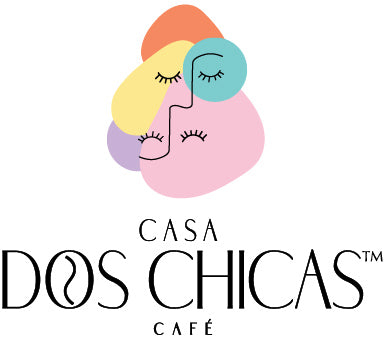So many ways to say, “Coffee”: Honoring our ancestors for Hispanic Heritage Month
Posted on October 01 2021,

Naming a coffee feels a lot like naming your child — a personal process that brings up a lot of questions about what’s important. The name should be memorable. It should certainly be unique. And it helps when it’s pronounceable.
We aimed for all three — but we also wanted our coffees to reflect the cultural heritage that is uniquely theirs.
So, in honor of Hispanic Heritage Month, we thought we’d share the names of our coffees and explain how each bears the character of its Latin American origins.
Cafēnyōlli: Nahuatl for “coffee bean”
Spoken by about 1.7 million people in Mexico, Nahuatl was the language of the Aztecs and is one of 64 indigenous languages of Mexico.
Our certified organic Mexican coffee originates in the Soconusco region— a mountainous area in the southernmost state of Chiapas, near the country’s border with Guatemala. This part of Mexico is home to the country’s largest indigenous populations, and although coffee wasn’t introduced to the area until long after the Aztec empire fell, Cafēnyōlli made its way into the language, reflecting its importance to the region.
Cibao: Taíno for “Place where rocks abound”
Spoken in Taíno, a now-extinct language of the Caribbean, “El Cibao” refers to the highly populated, mountainous northern region of the Dominican Republic where our Cibao coffee originates.
The grower is located in El Cibao’s Jarabacoa region, which is known for its tropical rain forest climate and nicknamed “The City of Everlasting Spring.” Legend says Jarabacoa belonged to an ancient chiefdom centuries before the arrival of Christopher Columbus.
Grown at an elevation of 1,400 meters above sea level, Cibao is unique for its island flair.
Kojee: Derived from “Kogi,” meaning “jaguar”
The name “Kojee” derives from Kogi, the indigenous ethnic group who live in Colombia’s beautiful Sierra Nevada de Santa Marta mountains, where Kojee coffee is grown. History tells us that centuries ago, this brave tribe defied the Spanish conquistadores by moving high up into the mountains, where many of their sacred sites still exist to this day.
Families from 19 different villages grow the coffee we call Kojee, working together toward the combined goals of improving social welfare, economic growth, quality of coffee and eco-tourism while preserving the region’s picturesque peaks, rivers and valleys.
The Quechua people of Peru pre-date the Incans, and their culture lives on through a rich heritage of music, dance, language and colorful textiles throughout the Andean regions of South America.
Our Kaphiy beans come from the provinces of Jeun and San Ignacio, where a cooperative of more than 1,000 growers unite to produce rice, cacao and of course, coffee, on sustainable farms. Today, an estimated 5 million speakers of Quechua live in Peru, representing several indigenous groups and bringing many vibrant traditions to this region.
Like the child of a prominent family, each of our coffees proudly bears the name or language of a centuries-old culture. As we celebrate Hispanic Heritage Month, we invite you to learn more about each coffee and join our mission to support the growers who uphold these important cultures.
